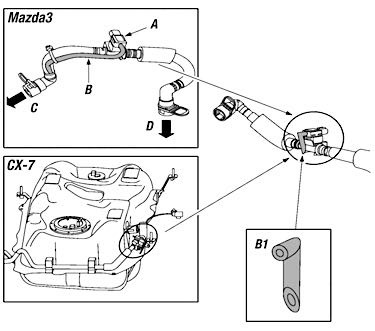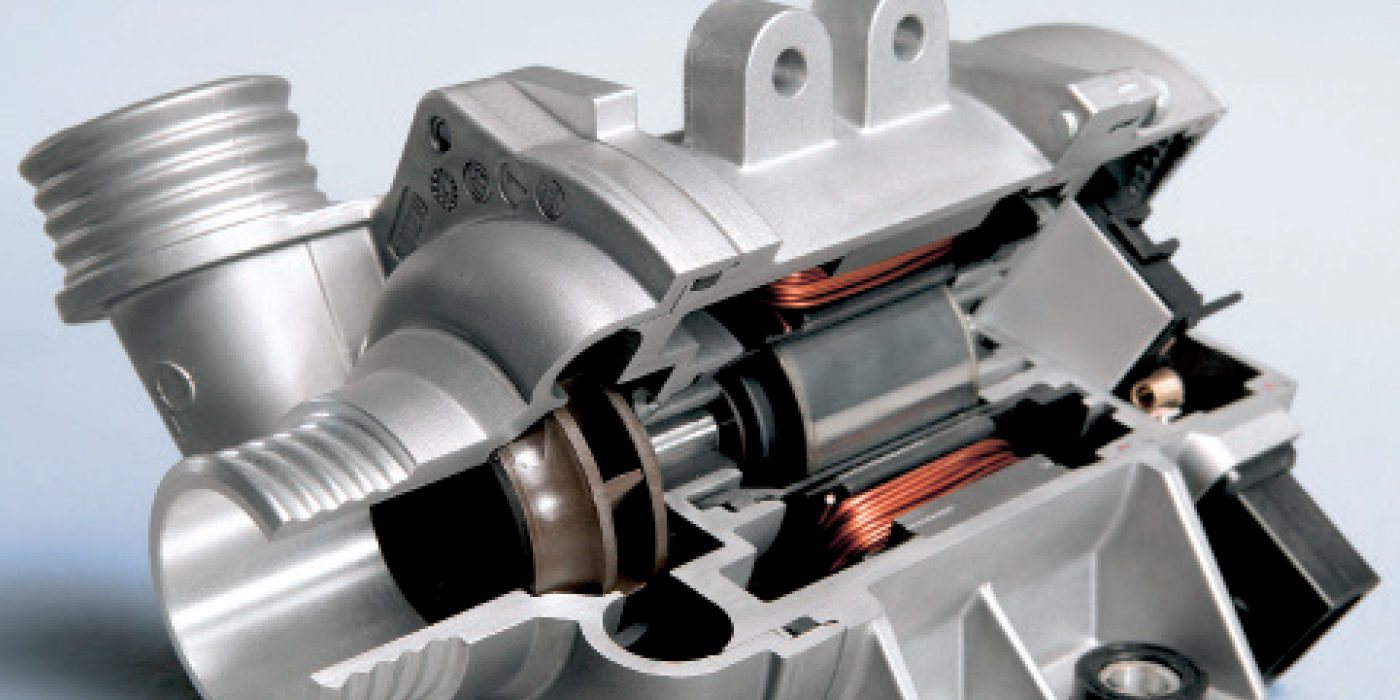Models: 2010 Mazda3, 2010 Mazda CX-7
Condition: Some vehicles may experience a MIL on with only OTC P0451 stored in the memory. This is caused by water entering and freezing in the atmosphere breather hose of the fuel tank pressure (FTP) sensor. For Mazda3s, this happens when the vehicle is washed in a high-pressure car wash. For the CX-7, this happens when the vehicle is driven on a wet road. To correct the problem, a modified breather hose has been adopted.
Customers having this concern should have their vehicle repaired using the following repair procedure.

Repair Procedure:
1. Verify customer concern.
2. Remove and inspect both the FTP sensor (A) and atmosphere breather hose (B), if applicable, from the vehicle, and inspect for water and/or ice. End (C) goes to the fuel tank and end (D) goes to the canister. See Figure 1.
• If water is found, drain the water from the FTP sensor by shaking it out.
• If ice is found, warm up the sensor and then drain.
Caution: Do not use pressurized air to drain the water from the FTP sensor, otherwise the sensor could be damaged.
3. Install a modified breather hose (B1) as shown.
4. Reinstall the FTP sensor.
5. Using the M-MDS, confirm that the FTP sensor PIO voltage readings are within 2.5-3.6 volts.
• If the FTP sensor voltage readings are within range, repair is complete.
• If the FTP sensor voltage readings are NOT within range, the sensor has been damaged and needs to be replaced.
Courtesy of ALLDATA.














